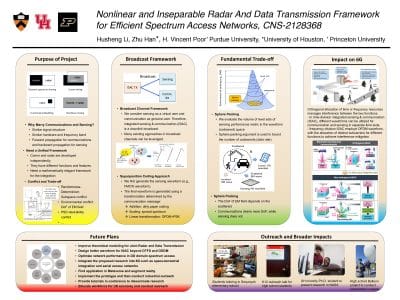Authors
Husheng Li, Zhu Han, H. Vincent Poor
Abstract
This study devises a nonlinear and inseparable radar and data (NIRAD) transmission scheme, in which the functions of communications and radar sensing are integrated in the same waveform and use the same hardware. In contrast to linearly superimposed communications and radar sensing, the NIRAD scheme integrates both functions in an inseparable manner, thus allow each to fully exploit the resources of the other. When a waveform is transmitted, the electromagnetic wave brings information to the communication receiver; upon reflections, the wave brings back information for radar sensing, thus achieving both functions in the same round of transmission. When the different functions of communications and radar sensing are integrated in the same waveform and hardware, they have conflicting interests, due to their different purposes. This project discloses the trade-off between communications and radar sensing and characterizes it in an economics framework. The NIRAD technique is applicable to various practical systems, such as high-definition maps in autonomous driving, space-terrestrial communications, and reconfigurable intelligent surfaces, by improving the efficiencies of bandwidth, power and hardware. The proposed algorithms and protocols will be tested using software simulations and field experiments based on a 6G testbed.

